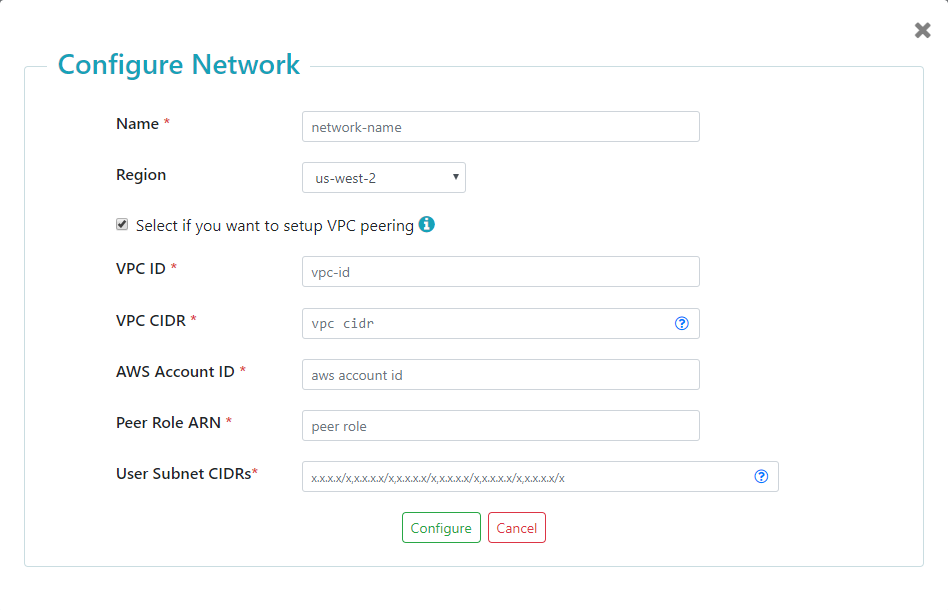Set Up a Peered Network for Data Hub Service - AWS
Before you begin
You need:
About this task
Important: For this task, you must log into your DHS portal with the Security Administrator (SEC-ADMIN) portal role. See Portal Security Roles .
Procedure
Results

Note: The Network CIDR is the CIDR of your MarkLogic VPC, which is provided and managed by MarkLogic.
The dashboard displays information about each of the current network configurations, listing the information and status for each configuration. The status of the network in the status bar must be Completed. The Public Subnet CIDRs and the Private Subnet CIDRs are calculated from the VPC CIDRs.
Important: You will need the Public and Private Subnet CIDRs and Peering Connection ID shown here when you configure your client-side network routing.
- To add a network configuration, click .
- To delete a network configuration, click in the configuration's row under the Delete column.
